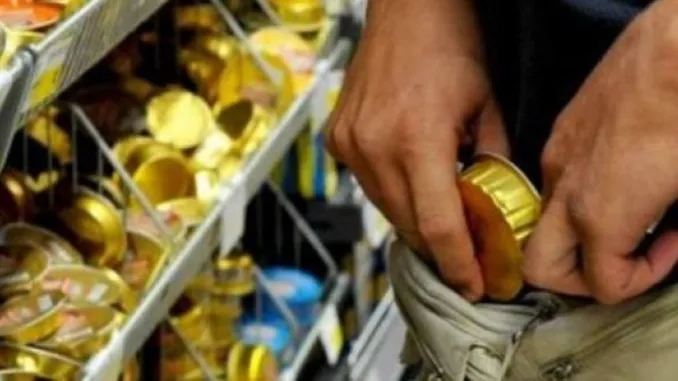Kleptomania
Characteristics of Kleptomaniacs
 File photo | Credit: Railly NewsOpens in new window
File photo | Credit: Railly NewsOpens in new window
The essential feature of Kleptomania is recurrent, intrusive, and irresistible urges or impulses to steal unneeded objects. For example, a person may take books even though they cannot read or baby outfits they consider cute even though they have no children and have sufficient money to buy them. |
Kleptomania has been recognized for nearly 200 years. Bleuler provided one of the first clinical descriptions: “The Kleptomaniacs in the old sense cannot even otherwise resist the impulse of appropriating things …” The disorder was listed as a supplementary term in DSM-I and was formally included in DSM-III. The disorder has continued to the present.
In DSM-5, Kleptomania is defined as the “recurrent failure to resist impulses to steal objects that are not needed for personal use or for their monetary value”.
In addition, there is an increasing sense of tension immediately before committing the theft, followed by pleasure, gratification, or relief at the time of the theft. Importantly, individuals do not steal to express anger or vengeance, or steal in response to hallucinations or delusions.
In ICD-10, Kleptomania (or pathological stealing) is defined as the repeated failure to resist impulses to steal objects that are not acquired for personal use or monetary gain.
As with other impulse-control disordersOpens in new window, kleptomania is characterized by mounting tension before the act, followed by gratification and lessening of tension with or without guilt, remorse, or depression after the act. While most stealing is impulsive, some is premeditated.
Kleptomaniacs tend to steal items that they otherwise could afford such as toiletries, make-up, or jewellery. Triggers include feelings of depression, anxiety, or boredom, or sometimes the particular sights, sounds, and objects found within a store. Lying to conceal the stealing is common.
Although the thefts do not occur when immediate arrest is probable, persons with kleptomania do not always consider their chances of being apprehended, although repeated arrests lead to pain and humiliation.
Some stop stealing temporarily following an arrest for shoplifting, but the behavior resumes unfettered for most. A small number of individuals report that they have no memory of the stealing or that it occurs in a dream-like (or dissociative) state. For these individuals, stealing may become automatic.
Kleptomaniacs may feel guilt and anxiety after the theft, but they do not feel anger or vengeance. Clinicians should rule out other causes of stealing before making the diagnosis of kleptomania.
More importantly, when the item stolen is the goal, the diagnosis is not kleptomania; in kleptomania, the act of stealing is itself the goal.
Other possible diagnoses include anti-social personality disorder, crime occurring in the context of adult antisocial behavior, and stealing that may occur in the course of a neurocognitive disorder, mania, or psychosis.
Kleptomania appears more common in women than in men. Many cases begin in the late teens to early 20s and often follow an episodic or a chronic course.
By the time patients seek treatment, women are typically in their mid- to late 30s, while men are in their 50s. Clinical studies show that kleptomania often co-occurs with other mental psychiatric disorders, including mood, anxiety, substance use, and eating disorders (particularly bulimia). Kleptomania may also be associated with compulsive shopping.
Family study data are limited, but studies suggested that people with kleptomania have first-degree relatives with high rates of mood disorders, obsessive-compulsive disorder, and substance use disorders.
Kleptomania may be associated with serotonergic and frontal lobe dysfunction, as evidenced by reduced [3H] paroxetine binding (a peripheral marker of serotonin function) found in a mixed group of 20 people with obsessive-compulsive-related disorders, including five with kleptomania.
In another study, ten women with kleptomania were more likely than controls to have decreased white matter microstructural integrity in the inferior frontal brain regions when evaluated with diffusion tensor imaging.
While there are no standard treatments for kleptomania, various forms of cognitive behavioral therapy have been recommended. Case reports and open-label studies have reported on the use of SSRIs, topiramate, and naltrexone.
Interestingly, there are also case reports of persons treated for depression with SSRIs who subsequently developed kleptomania. In a randomized controlled trial (RCT), naltrexone produced significant reductions in stealing urges and behaviors, compared with placebo. Common wisdom suggests that a self-imposed ban on shopping in an attempt to head off potential thefts may help curb stealing, but this may not be sustainable.
See also:
- Bullying BehaviorsOpens in new window
- Impulsivity (Impulsive Behaviors)Opens in new window
- Conduct DisorderOpens in new window
- Intermittent Explosive DisorderOpens in new window
- Antisocial Personality DisorderOpens in new window
- Oppositional Defiant DisorderOpens in new window
- PyromaniaOpens in new window
- TrichotillomaniaOpens in new window
- Centers for Disease Control and Prevention. (2013). Mental Health surveillance among children — United States, 2005 – 2011. Morbidity and Mortality Weekly Report, 62(Suppl; May 16, 2013), 1-35.
- Christianimi, A.R., Conti, M.A., Hearst, N., Cordas, T.A., de Abreu, C.N., & Tavares, H. (2015). Treating Kleptomania: Cross-cultural adaptation of the kleptomania symptom assessment scale and assessment of an outpatient program. Comprehensive Psychiatry, 56, 289 – 294.

